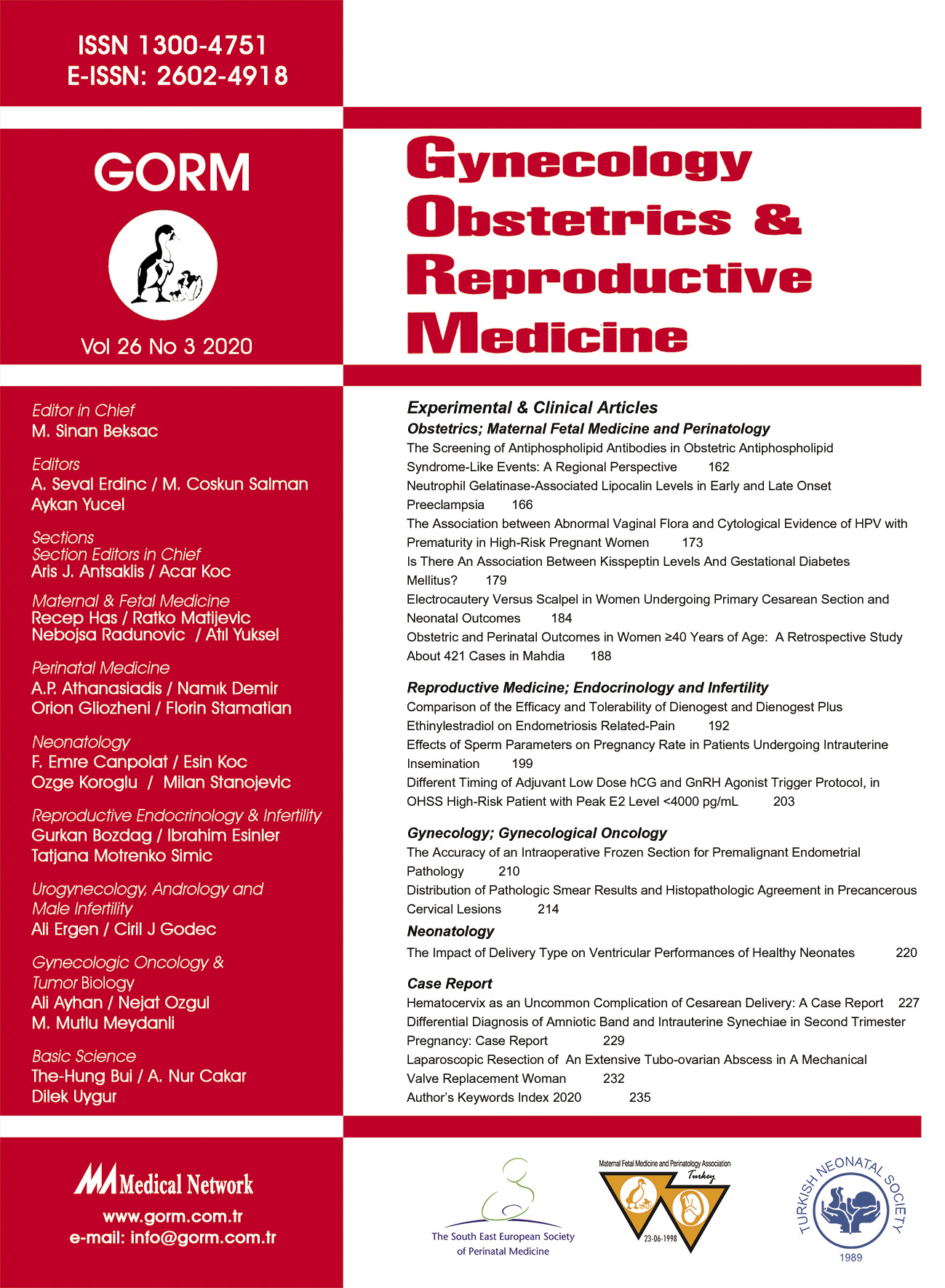Comparison of the Efficacy and Tolerability of Dienogest and Dienogest Plus Ethinylestradiol on Endometriosis Related-Pain
DOI:
https://doi.org/10.21613/GORM.2019.944Keywords:
Dienogest, Dienogest plus ethinylestradiol, Endometriosis, Hormonal treatmentAbstract
Objective: Endometriosis is a common gynecological condition that affects many women of reproductive age worldwide and is a major cause of pain and infertility. Treatment of endometriosis can be either surgical, aiming to restore normal anatomy by removing endometriotic lesions, or hormonal. Various medical treatments with different doses, formulations, delivery systems, and regimens have been tested. The main objective of this study was to compare the efficacy and tolerability of dienogest and dienogest plus ethinylestradiol on endometriosis-related pain. Additionally, the effects on endometrioma size were examined.
Study Design: A total of 81 patients with clinically diagnosed endometrioma, who had chronic pelvic pain, dysmenorrhea, or deep dyspareunia between January 2015 and December 2018 were studied retrospectively. The patients were divided into two main groups: continuous oral dienogest (n=43) (Visanne®, 2 mg/day) and continuous oral dienogest plus ethinylestradiol (n=38) (Dienille®, 2 mg/0.03 mg/day). The intensity of pain symptoms was evaluated before therapy, then after 3 and 6 months of treatment using a 10-point numerical rating scale (0 = no pain and 10 = worst possible pain) (NRS) provided to the patients in advance.
Results: The pain scores related to chronic pelvic pain decreased 36% for dienogest and 49% for dienogest plus ethinylestradiol (p<0.05) and scores for dysmenorrhea decreased 38% and 44% respectively (p<0.05) at 6 months, significantly lower than before treatment. At the 6-month follow-up, a 28% decrease in the pain scores related to deep dyspareunia in the dienogest group was statistically significant. Although the dienogest plus ethinylestradiol group also decreased by 20%, the difference was not significant. There was no significant difference in endometrioma size between the two groups at the 6-month follow-up (dienogest and dienogest plus ethinylestradiol; 24.2±17.5 mm vs. 27.5±19.1 mm, respectively; p=0.42).
Conclusion: Upon analysis of our 6 months of clinical data, estrogen-progestin and a progestin alone seem to be of similar efficacy for the temporary treatment of endometriosis-related pain. The dienogest plus ethinylestradiol combination was slightly less effective on deep dyspareunia but was still well tolerated. Similarly, the two hormonal regimens posed no superiority over one another with regard to endometrioma size reduction.
Downloads
Downloads
Published
How to Cite
Issue
Section
License
Copyright (c) 2020 Tolga Karacan, Huseyin Kiyak, Eser Ozyurek, Mevlide San, Engin Oral

This work is licensed under a Creative Commons Attribution 4.0 International License.
All the articles published in GORM are licensed with "Creative Commons Attribution 4.0 License (CC BY 4.0)". This license entitles all parties to copy, share and redistribute all the articles, data sets, figures and supplementary files published in this journal in data mining, search engines, web sites, blogs and other digital platforms under the condition of providing references.





